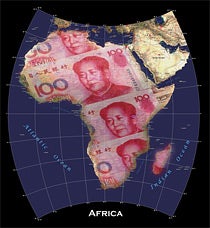China’s Strategic Economic Zones in Africa
Four Pillars of China-Africa Relations
Economic Interests and Trade Growth
China’s Aid and Development Strategy in Africa
<P
This year, China could scoot ahead of the U.S. and become Africa's biggest trading partner, reckons David Shinn, a former U.S. ambassador to Ethiopia and Burkina Faso and an expert on Chinese-African relations. Meanwhile, although both Europe and the U.S. have a longer tradition of as foreign direct investors in Africa than China, it is catching up -- and its interests reach beyond trade and commerce, says Shinn, who is the co-author of forthcoming book (published by University of Pennsylvania Press) on China-Africa relations. In an interview with China Knowledge at Wharton, Shinn dissects the country's aid and development strategy in Africa and explains why it has a steep learning curve ahead.

<P
Sign up to stay informed about our latest article releases.